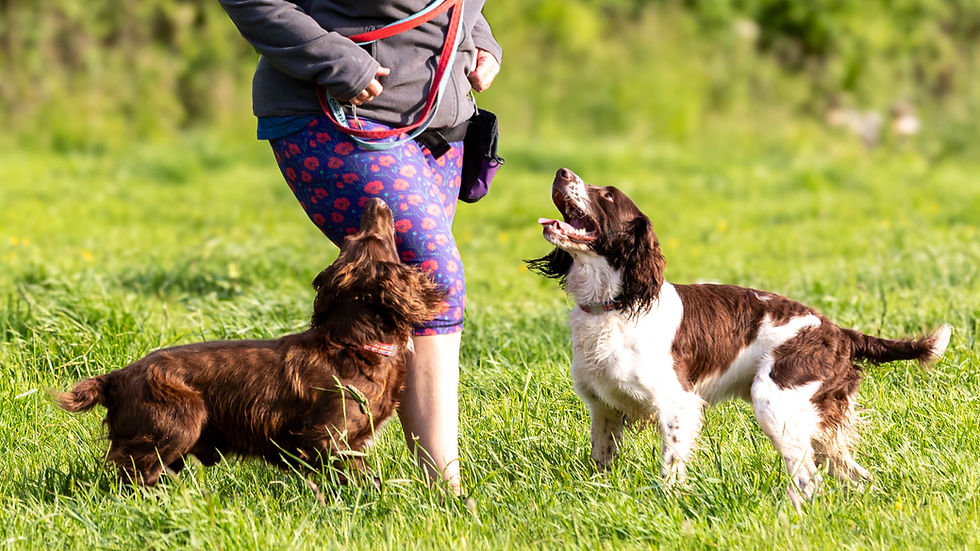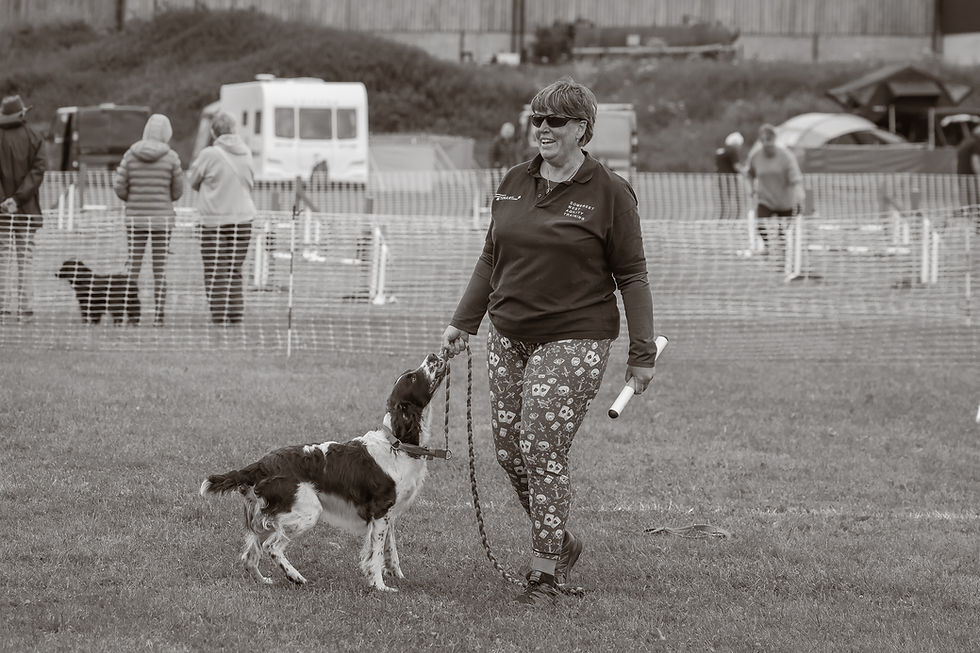The 14 Words I Repeat Every Time Loose Lead Walking Comes Up
- Sara Seymour

- Jun 29, 2021
- 3 min read
Updated: Jan 3, 2025
I live with a spaniel. Until recently I lived with two. I'm a member of a few spaniel related groups on Facebook (not many - more on that in a moment). Loose lead walking is a topic that comes up time and again; people getting fed up of their arms being pulled out of sockets, making walks miserable. The advice offered in groups is one of the reasons I'm not in many spaniel specific groups - it's often out-dated, and sometimes potentially dangerous.
In the groups that I am in, whether or not I comment varies on a number of things; what comments there have been already, which group it is and my general mood in the moment to name just a few! However, there is one piece of advice that I have written so many times that my phone auto-completes it with just a few taps! It's the reason that many struggle with teaching their dog to walk on a loose lead. Here it is...

Never Try To Teach Loose Lead Walking When You Actually Need To Get Somewhere
The reason that most dogs pull on the lead is because it works; it gets them to where they're going to be let off, to that patch of grass that they MUST sniff or to that person they really want to see. What gets reinforced gets repeated, and the more they practise this behaviour (and are successful) the more it gets reinforced. So many people struggle to teach loose lead walking because, quite honestly, it's boring! For many dogs it takes quite a while, and a lot of repetition of walking the same stretch of road/pavement. The more practise they've had at pulling, the longer it's going to take to get a solid replacement behaviour.
Here's what happens - you set out for your walk, all intent on not progressing unless the lead is loose. You're going to stop and wait for your dog to return to your side each and every time they pull. A perfectly valid approach. However, there's that day when you haven't got much time because you're late for work so you just need to get to the park as quickly as you can, and try to ignore one arm getting longer than the other. Each time this happens, you erode the good work you've been doing. And because getting to the park is more reinforcing for your dog than walking calmly by your side, you're not dealing with a one to one ratio. All they're going to be learning is that pulling still works.
The trick to successfully teaching loose lead walking is to train it when that's all you have to do - your only goal is a few paces of loose lead walking. You're not worrying about having to get somewhere or meet someone. You can focus entirely on the criteria you've set, and reinforcing that. Eventually, you'll be able to take your new skills on the road, but to start with it's important to train in a low distraction environment.
For all the other times, you need to consider other options. I touched on this in a previous post - The Only 3 Strategies You Need to Deal With Your Dog's Undesirable Behaviours. My choice was a two point harness, but other options include driving somewhere and just letting your dog out (not to be advised if they are going to run flat out from the start) or even a head collar. The thing to remember about any equipment that you use is that it doesn't teach your dog to walk on a loose lead - it just makes it difficult or uncomfortable not to. The degree of difficulty or discomfort will depend on the equipment. Of course, you could continue to let them pull, but I would highly recommend using a well-fitted harness and definitely NOT a collar if that's the route you take.
I spent a lot of time when Ripley was young just walking up and down my road. Gradually getting a little further, adding in a bit more distraction, asking for more steps before reinforcing. I only did five or ten minutes at a time (lots of short sessions are better than one long session). We weren't going anywhere in those early days, but once he could reliably walk from my house to the end of the road and back for just one or two treats we were ready to try short distances in more distracting areas. Yes, it was a commitment and wasn't always the most exciting of training, but the outcome is that six years later I can walk him nearly anywhere with a loose lead - so much more relaxing than years of having my shoulder wrenched.
Further Resources Get started with Get Your Dog's Attention (And Keep It!) - loose lead walking starts with a great connection.


